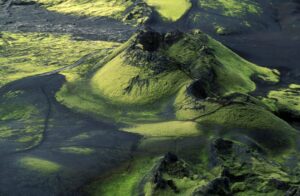The damage caused was enormous and concentrated because this earthquake occurred within a densely-populated area.
An earthquake of magnitude 6.7 hit an area of high population density twenty-five miles northwest of Los Angeles at 4:30 A.M. on January 17, 1994. About ten million people in the Greater Los Angeles region felt the impact of the quake. This earthquake, named for its epicenter in the town of Northridge, proved to be the costliest in U.S. history. Communities throughout the San Fernando Valley and in its surrounding mountains north and west of Los Angeles were affected, causing losses of 20 billion dollars. Fifty-seven people died, more than 9,000 were injured, and more than 20,000 were displaced from their homes.
Because the earthquake was centered beneath a built-up urban area, the impact on buildings of all kinds was immense. Thousands of buildings were significantly damaged, and more than 1,600 became unsafe to enter. The shaking lasted for less than thirty seconds but in that time buildings came down, freeway interchanges collapsed, and fires broke out as gas lines were broken. Fortunately, the early morning timing of the earthquake spared many lives that otherwise might have been lost in collapsed parking buildings and on failed freeways. Freeway bridges built or designed before the mid-1970s and had not been retrofitted to meet new standards failed. Telephone systems broke down, not because of equipment failure but due to overload and they were inadequate for an emergency of this scale.
The earthquake began as a rupture on a hidden fault at a depth of ten miles beneath the San Fernando Valley. For eight seconds following the initial break, the rupture continued to extend upward and northwestward along the fault plane at a rate of two miles per second. The rupture front spread out across as well as along the fault plane, so that the eventual size of the rupture covered an area of ten by twelve miles. The rupture stopped at a depth of three miles. Maximum intensities from the quake were felt in and near Northridge and in Sherman Oaks. Lesser, but still significant intensities were felt in Fillmore, Glendale, Santa Clarita, Santa Monica, Simi Valley, and in western and central Los Angeles. A rise in ground level of six inches occurred in the Santa Susana Mountains and there were many rockslides in mountain areas that blocked roads. Some ground cracks were observed at Granada Hills and liquefaction occurred at a number of locations in the Simi Valley.
In summary, all the lifeline systems in the areas affected by the quake were damaged in various ways, including freeways, communications, gas, water, power, and sewage. Additionally, the delivery of water from the Colorado River and northern California was disrupted so that some areas were without water for weeks. This earthquake measured 6.7 on the Richter Scale and there is a tendency to assume that an event of this strength will do less damage than one of magnitude 8 or higher. However, everything changes when an earthquake occurs in the middle of a major urban area. In Japan in 1995, when the city of Kobe was hit with a quake of magnitude 6.9, the destruction that followed was far costlier than anything the country had previously experienced. Costs in that event were seven times the total for the Northridge quake.





















